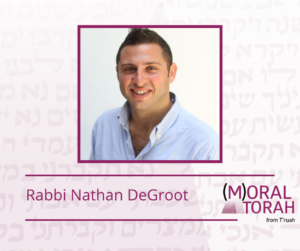A D’var Torah for Parshat Shemot by Rabbi Nate DeGroot
The heart plays a prominent role in the book of Exodus. Most famously, Pharaoh’s hardened heart repeatedly and painfully delays the Israelites’ escape from Egypt. At least ten times, the Egyptian ruler’s heart is hardened or made heavy, and each of those times his stubborn refusal to let the Israelites go results in additional plagues and harsher divine retribution. Pharaoh’s hard and heavy heart is a symbolic symptom of the sick theocratic system that defines his reign. It becomes the marker of his haughty intransigence.
However, earlier in the book, a different heart, oriented in a very different manner, actually sparked the liberation movement that would ultimately defeat Pharaoh and his army and that would come to define the Jewish people still today. In this week’s Torah portion, Shemot, we find Moses the shepherd wandering the wilderness, tending his father-in-law’s flock. When he arrives at Horeb, the mountain of God, “an angel of THE ETERNAL appeared to him in a blazing fire out of a bush. He gazed, and there was a bush all aflame, yet the bush was not consumed” (Exodus 3:2).
Sign up to receive (M)oral Torah in your inbox each week.
How could it be that the bush was engulfed in flame but also intact? And who or what was this “angel of THE ETERNAL” in the fire? Rather than turn away or retreat from this overwhelming and otherworldly phenomenon, Moses inches his way closer to get a better look at the benign conflagration. Whether out of curiosity or perhaps a sense of duty, he declares, “I must draw near to look at this marvelous sight” (3:3).
As soon as he says this — as soon as he chooses to engage — God (and not the angel) calls Moses’ name from within the bush. Moses responds, “Here I am” (3:4), and the rest is history. As we know, God convinces Moses to go back to Egypt, lead the Israelites out of slavery, and ultimately lay the foundation for a people’s millennia-defining rise from degradation to dignity.
But what if Moses, frightened and overwhelmed by what he was seeing, had backed away rather than drawing closer? What if he had politely declined God’s supranatural invitation to wonder and instead slinked meekly back to shepherd his flock? What if “let my people go” had never been?
As is evident in this episode, so much of our history depended on that split second between Moses noticing and engaging. Moses saw the bush, but it was the drawing nearer that opened up for him and us the world of possibility that followed. And according to the medieval Spanish commentator Ramban, it was a reorientation of heart consciousness that allowed Moses in that moment to choose curiosity and open to the divine.
Find more commentaries on Shemot.
Reading the text closely, Ramban notices that at first an angel of God appeared in the fire of the bush (3:2), but the voice that calls Moses by name two verses later is God’s own (3:4). Where did God come from, when at first only God’s angel was present? Picking up on this inconsistency, and the way the text uses a different name for God in each verse, he explains it like this:
At first, the angel Michael appeared to Moses in the bush. Even though the Glory of the Shechinah (Divine Presence) was also there, Moses did not see it because he had not attuned his prophetic spiritual consciousness. When he oriented his heart and drew near to observe the bush more closely, then the vision of the Divine Presence revealed itself to him and God called him from within the bush. (Exodus 3:2)
We walk through this world so often defaulting to the mundane. Six days a week it is the framework within which we exist. But what Ramban is saying, and what Moses is modeling for us, is the possibility of seeing this world as miraculous in any moment.
Surely, there are miracles all around us. Undoubtedly, the Glory of the Divine Presence can be found in each person and every interaction. And yet, in our pursuit of justice and the urgency of fixing, how many burning bushes do we ignore along our way? And if we do see one, how reluctant are we to pause and draw nearer in curiosity? When analysis or argument overrides wonder, do we risk ceding what we’re seeking in the first place? Do we risk hardened hearts like Pharaoh, even if our aim is holy?  No doubt, fierce action must closely follow and accompany wonder each step of the way; everything that comes after the burning bush is clear on that. But we must also ask, as we pursue the world we’re trying to create: How can we attune our spiritual selves and orient our open hearts so we can hear when God calls our name?
No doubt, fierce action must closely follow and accompany wonder each step of the way; everything that comes after the burning bush is clear on that. But we must also ask, as we pursue the world we’re trying to create: How can we attune our spiritual selves and orient our open hearts so we can hear when God calls our name?
Rabbi Nate DeGroot is a Michigan-based rabbi, serving the local community as a congregational rabbi, educator, and speaker. Ordained by Hebrew College in 2016, he previously served as Associate Director at Hazon in Detroit and as the inaugural Jewish Emergent Network Rabbinic Fellow at IKAR in Los Angeles. He is an alumnus of the T’ruah Israel Fellowship.

